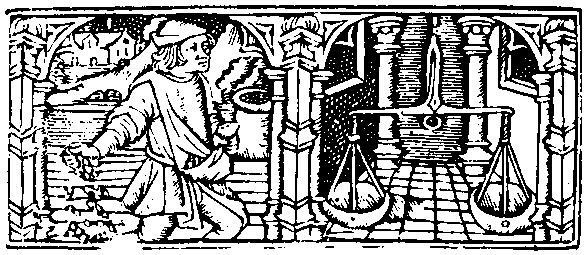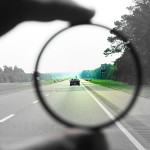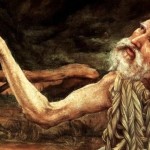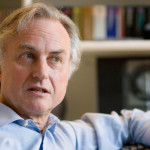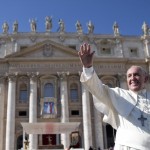Debunking the Mythical Conflict Between Science and Religion
by James Hannam
Filed under Christianity and Science
A couple of years ago, I had the privilege of giving a talk at the Royal Society in London on medieval natural philosophy. During the course of my talk, I mentioned that the great conflict between science and religion is a myth. I also covered a few of the more egregious legends that feed the myth, such as the claim that medieval people thought that the Earth is flat. Afterwards, not expecting to hear anything more on the conflict myth, I took questions. But one of the first was about Roger Bacon and William of Ockham. Weren’t they examples of scientists persecuted by the Church?
That’s the strange thing about the conflict myth: much of the evidence for it is bogus. Most people are not only ignorant of the real history of science and religion, but what they think they know is actually untrue. My interrogator at the Royal Society was misinformed about Bacon and Ockham, but had accepted what he’d heard about them because it was consistent with his overall image of the medieval Church. It’s safe to say that, when properly investigated, almost none of the allegations behind the conflict myth stack up. That’s why we hear so much about the trial of Galileo. It’s the one unambiguous example of where the Church got it wrong (even if it was not the unambiguous attack on science by religion often supposed).
So I thought readers of Strange Notions might enjoy some of the weird and wonderful ways that non-believers have told me, with a straight face, that the Church held back science. I’ll also briefly debunk each of the myths just in case you hear them yourselves. Let’s start with Roger Bacon and William of Ockham.
Roger Bacon and William of Ockham
The origin of the story that Roger Bacon was imprisoned for his scientific theories is the Chronicle of the 24 Ministers General of the Franciscans dating from about 1370, a full century after Bacon’s alleged arrest. This document claims that he was a master of theology and imprisoned for unspecified ‘suspect novelties’. If we give this account any credence, which may be unwise given we know that Bacon never qualified as a theological master, it still has nothing to do with science.
Unlike Roger Bacon, we do know that William of Ockham was investigated for heretical statements. He failed his final exams at Oxford and was sufficiently displeased to appeal the result to the Pope. The decision took so long in coming that William eventually threw in his lot with the Holy Roman Emperor, then the Pope’s arch-enemy. It’s probably true that this meant Ockhamist philosophy was not viewed sympathetically from then on. But again, the dispute had nothing to do with science.
Did the Church Ban 'Zero'?
The myth that the Catholic Church tried to ban the use of the number zero has grown more popular in recent years. The journalist Charles Seife managed to write an entire book (Zero: The Biography of a Dangerous Idea) about how zero was banned without ever realising his central argument has no foundation in fact. The same myth was passed on in Peter Atkins' Galileo's Finger and Felipe Fernandez-Armesto’s 1492. It is true that, when Arabic numbers were first introduced into the West, there was no agreement over which numeral should refer to which number. To this day, our zero means five in the Middle East. As a result of this potential for confusion, Arabic numerals were banned from some official documents. This might be the origin of the legend that the Church tried to forbid zero.
Popes, Dissections, and Gold
The Church also never objected to human dissection. This is actually quite surprising. Almost all other cultures, including Islam, ancient Rome and ancient Greece, have abhorred the cutting up of cadavers. Alarmingly, though, the vivisection of prisoners was briefly permitted by the Greek rulers of Alexandria in around 250BC. De sepulcheris, a papal bull of 1300, is occasionally advanced as evidence of a ban on human dissection. However, this bull, which forbade the boiling of bodies to render flesh from the bones, was aimed at crusaders rather than anatomists. The related myth that Vesalius, author of a famous book on anatomy published in 1543, had a run-in with the Spanish Inquisition is also discounted by historians. Vesalius died while on a pilgrimage to the Holy Land, but there is no reason to believe that this extremely devout man had not set off for Jerusalem voluntarily.
Another medieval bull, De crimine falsi of 1317, outlawed alchemists from selling their creations as real gold. This is occasionally trotted out as meaning the Church banned chemistry. Incongruously, the pope who issued the bull, John XII, also had an alchemy treatise attributed to him.
Comets and Lightning Rods
On the subject of things popes didn’t do, we still sometimes hear the nugget that Pope Callistus III excommunicated Halley’s Comet in 1456. This would have been a silly thing to do, but thankfully it never happened. The story appears to be based on misreading a contemporary chronicle juxtapositioning the comet with an invasion by the Turks.
Andrew Dickson White, the author of A History of the Warfare of Science with Theology in Christendom (1896), popularized the idea that the Church banned lightning rods. He dug up a sermon by a Boston pastor who voiced the common concern that attracting lightning (which is what the rod does, if only to dissipate it harmlessly to ground) was possibly not a good idea. In fact, once their efficacy had been proven, we find lightning conductors sprouted from churches relatively quickly. White also seems to be the source of the persistent but baseless myth that the Church resisted the use of anesthetics.
If you read the works of Carl Sagan and similar authors, you’ll note that various martyrs for science have been canonized. It is a sad fact that both Catholics and Protestants were engaged in the despicable practice of burning heretics.
But no one was ever executed for their scientific views. For a long time, people supposed that the Renaissance magus Giordano Bruno had died for his science. He was burned at the stake in Rome in 1600. But we now know he was an occultist whose support for Copernicus was not based on scientific grounds. Nor was it a reason for his execution. Pretty much all his cosmological thought can be found in a book by the fifteenth-century cardinal Nicolas of Cusa. Not even the Catholic Church would burn you at the stake for repeating the published thoughts of a cardinal.
Other occultists also drew the attention of the inquisition, including seventeenth-century father and son, Jean Baptiste and Francis Mercury van Helmont. Jean Baptiste was fascinated by the weapon salve whereby a wound could be cured by applying medicine to the implement that caused the injury rather than the injury itself. The Church was concerned when he suggested that healing miracles were really caused by this sort of natural magic. In the end, both van Helmonts were released and seem to have carried on their activities much as before. While no one should condone the activities of the Inquisition, it is surprising that an institution with such a fearsome reputation should have had such a trivial effect in the long term.
Darkening the Academies?
Going back to the earliest years of the Church, there are various other stories about how the Christians suppressed pagan learning and thus ushered in the “Dark Ages”. Some of these, such as the tales told about the destruction of the Great Library of Alexandria, are simply untrue. The myth that Christians destroyed the library is based on a misreading of the sources by the eighteenth-century historian Edward Gibbon.
Other events, like the murder of Hypatia in 415AD or the closure of the school of Athens in 529AD, did take place. However, the Neo-Platonists of Athens were teaching a mystical philosophy that had very little to do with science as we would understand it. This contrasts with the seminal work on physics being done by the Christian John Philoponus in Alexandria at the same time. That’s not to excuse the Emperor Justinian for closing the Athenian academy, it’s just that it didn’t have any effect on the decline of ancient science. Likewise, Hypatia’s death was a terrible crime, but it doesn’t mark the end of Alexandrian natural philosophy by any means. That was only finally extinguished by the Persian and Arab invasions of the seventh century.
All these instances of bogus evidence for the conflict myth don’t even form an exhaustive list. If you hear about yet more examples of how the Church held back science, do ask for a reference and see if the story stacks up. In any case, I’d like to hear about them to add to my collection.
Related Posts
Note: Our goal is to cultivate serious and respectful dialogue. While it's OK to disagree—even encouraged!—any snarky, offensive, or off-topic comments will be deleted. Before commenting please read the Commenting Rules and Tips. If you're having trouble commenting, read the Commenting Instructions.




